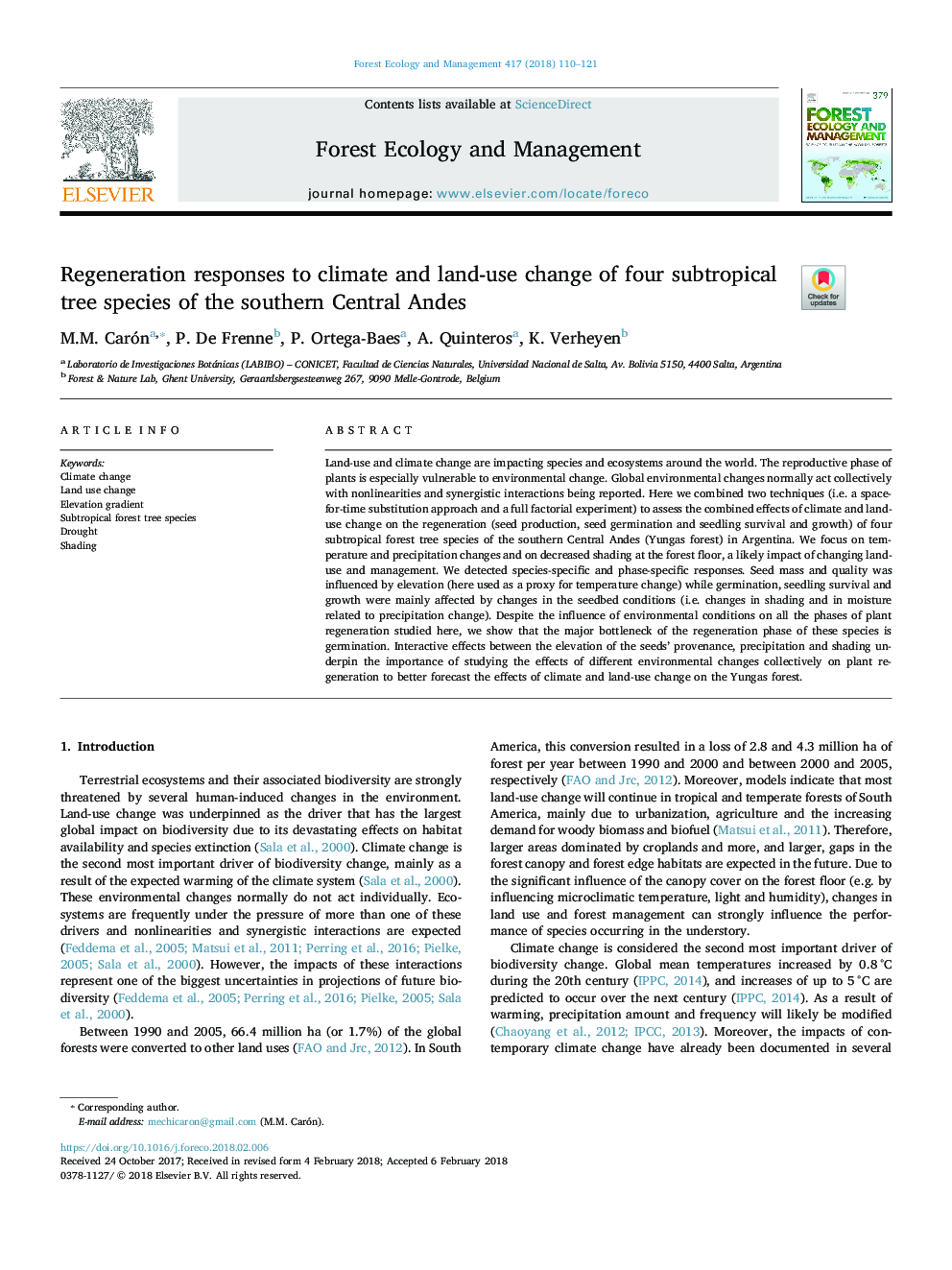| Article ID | Journal | Published Year | Pages | File Type |
|---|---|---|---|---|
| 6541747 | Forest Ecology and Management | 2018 | 12 Pages |
Abstract
Land-use and climate change are impacting species and ecosystems around the world. The reproductive phase of plants is especially vulnerable to environmental change. Global environmental changes normally act collectively with nonlinearities and synergistic interactions being reported. Here we combined two techniques (i.e. a space-for-time substitution approach and a full factorial experiment) to assess the combined effects of climate and land-use change on the regeneration (seed production, seed germination and seedling survival and growth) of four subtropical forest tree species of the southern Central Andes (Yungas forest) in Argentina. We focus on temperature and precipitation changes and on decreased shading at the forest floor, a likely impact of changing land-use and management. We detected species-specific and phase-specific responses. Seed mass and quality was influenced by elevation (here used as a proxy for temperature change) while germination, seedling survival and growth were mainly affected by changes in the seedbed conditions (i.e. changes in shading and in moisture related to precipitation change). Despite the influence of environmental conditions on all the phases of plant regeneration studied here, we show that the major bottleneck of the regeneration phase of these species is germination. Interactive effects between the elevation of the seeds' provenance, precipitation and shading underpin the importance of studying the effects of different environmental changes collectively on plant regeneration to better forecast the effects of climate and land-use change on the Yungas forest.
Related Topics
Life Sciences
Agricultural and Biological Sciences
Ecology, Evolution, Behavior and Systematics
Authors
M.M. Carón, P. De Frenne, P. Ortega-Baes, A. Quinteros, K. Verheyen,
